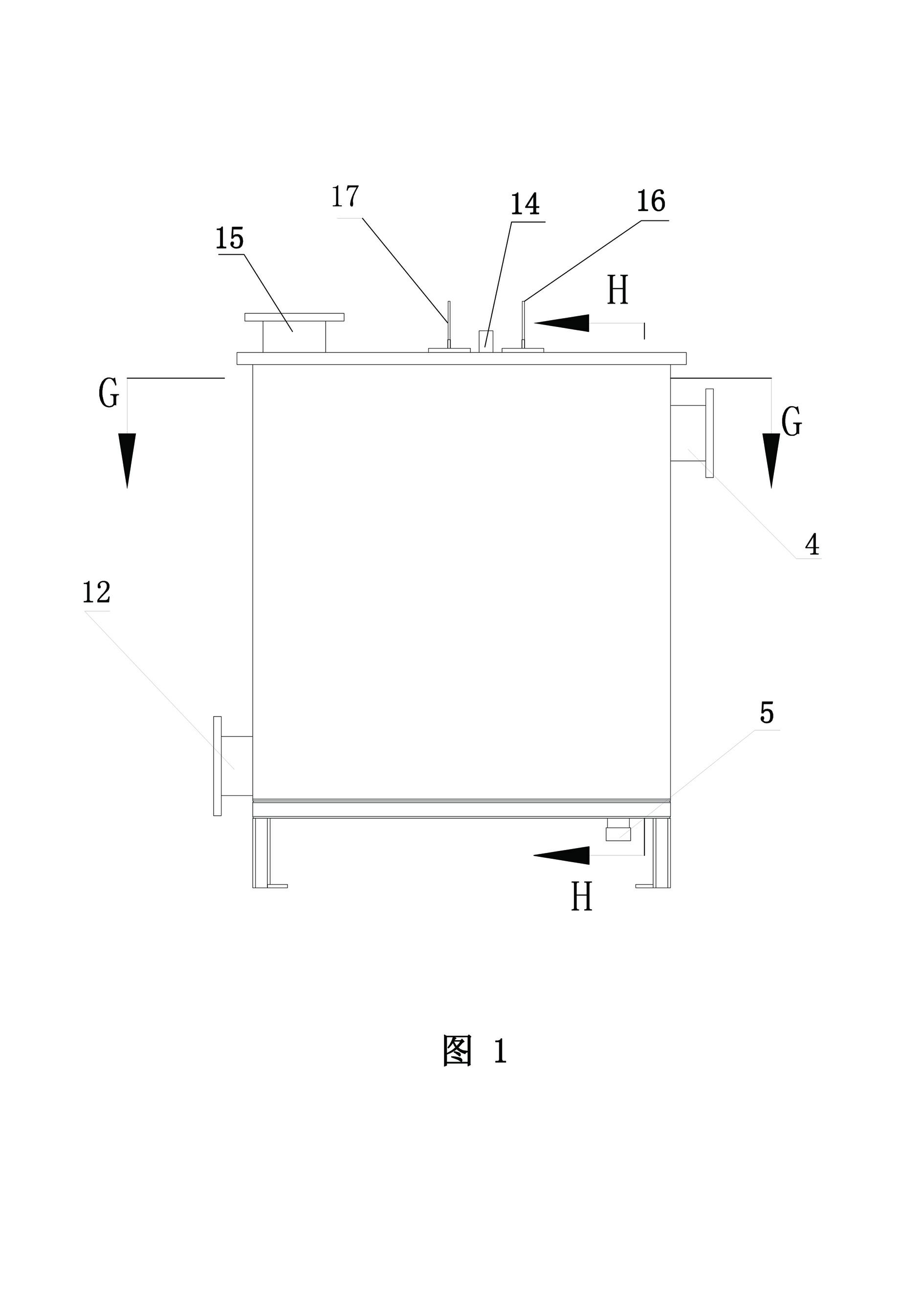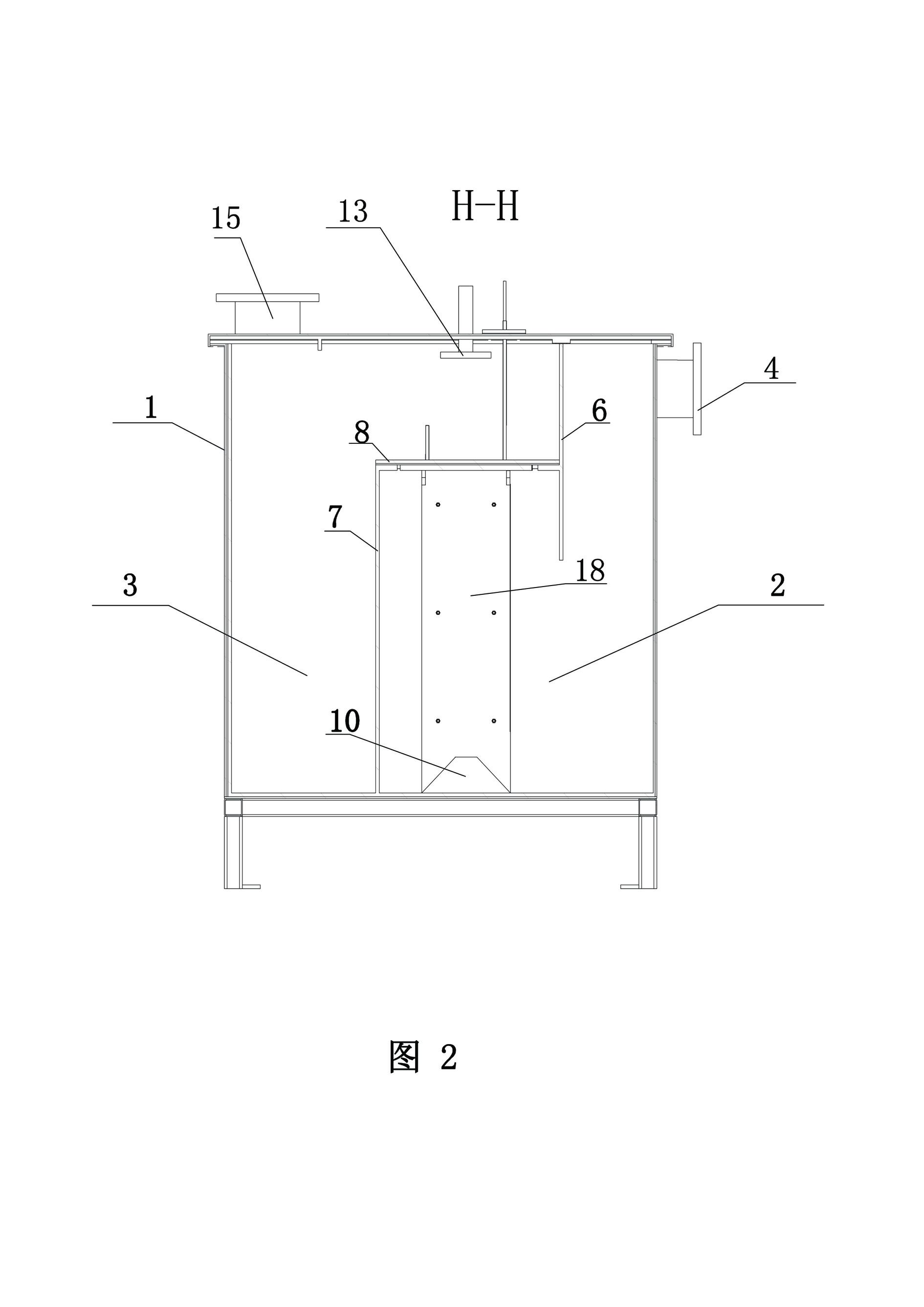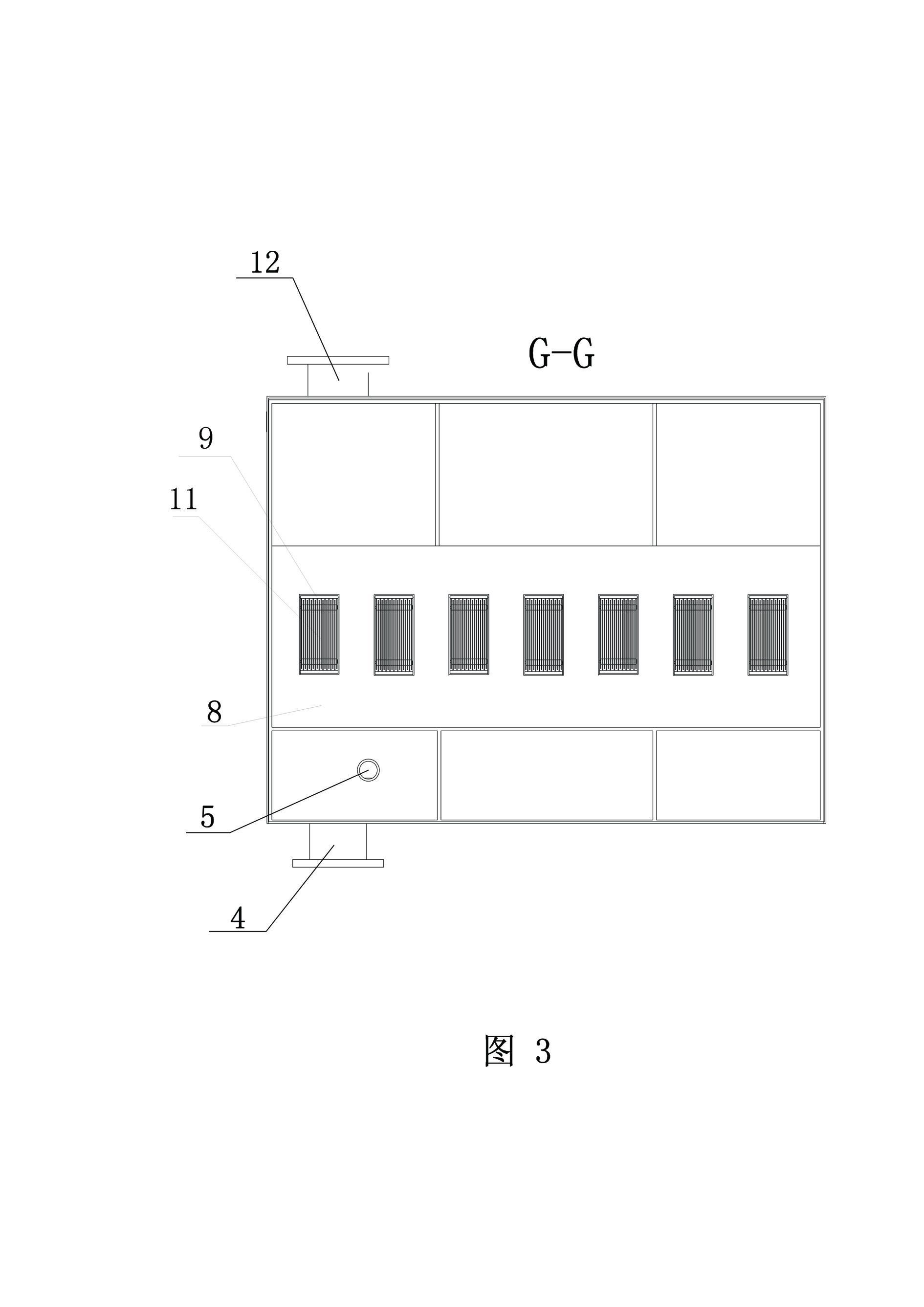Novel nanometer catalytic electrolysis device
A nano-catalysis and electrolysis device technology, applied in chemical instruments and methods, water treatment of special compounds, flotation water/sewage treatment, etc., can solve problems such as low current efficiency, high treatment cost, and unsatisfactory solid-liquid separation effect , to achieve the effect of accelerating the sedimentation of impurities and reducing pollution
- Summary
- Abstract
- Description
- Claims
- Application Information
AI Technical Summary
Problems solved by technology
Method used
Image
Examples
Embodiment 1
[0062] Treatment effect of purification and disinfection of polluted lake water
[0063] Pump the polluted lake water into a new nano-catalytic electrolysis device for electrolysis, the voltage between the two electrodes is 4 ~ 8V, and the current density is 200 ~ 320mA / cm 2 ), keep the residence time of the polluted lake water in the electrolytic cell not less than 20 seconds, and control the electricity consumption of the electrolysis of the lake water at 0.009-0.1 degree / m 3 , The cleaning frequency of the electrolysis device is once every 3 days. The effects before and after treatment are shown in Table 1 and Table 2.
[0064] Table 1 Index of untreated lake water
[0065]
[0066] Table 2 Lake water indicators after treatment by the new nano-catalytic electrolysis device
[0067]
Embodiment 2
[0069] The treatment effect on the purification and disinfection of seawater
[0070] Pump seawater into a new nano-catalytic electrolysis device for electrolysis, the voltage between the two electrodes is 3-5V, and the current density is 10-50mA / cm 2 , keep the residence time of seawater in the electrolytic cell not less than 30 seconds to 1 minute, and control the power consumption of seawater electrolysis to 0.001-0.004 degrees / m 3 , The cleaning frequency of the electrolysis device is once every 3 days. The effects before and after treatment are shown in Table 3 and Table 4.
[0071] Table 3 Index of untreated seawater
[0072] Table 4 Indexes of seawater treated by the new nanocatalytic electrolysis device
[0073]
Embodiment 3
[0075] Treatment effect on printing and dyeing advanced treatment wastewater
[0076] The printing and dyeing advanced treatment wastewater in the secondary sedimentation tank is pumped into the new nano-catalytic electrolysis device for electrolysis, the voltage between the two electrodes is 3-5V, and the current density is 50-150mA / cm 2, keep the residence time of printing and dyeing advanced treatment wastewater in the electrolytic cell for 1-5 minutes, and control the power consumption of electrolysis at 0.5-1.0 degrees / m2 3 , The cleaning frequency of the electrolytic device is once every 2 days. The effects before and after treatment are shown in Table 5 and Table 6.
[0077] Table 5 Indicators of untreated printing and dyeing advanced treatment wastewater
[0078]
[0079] Table 6 Indicators of printing and dyeing advanced treatment wastewater treated by the new nano-catalytic electrolysis device
[0080]
PUM
 Login to View More
Login to View More Abstract
Description
Claims
Application Information
 Login to View More
Login to View More - R&D
- Intellectual Property
- Life Sciences
- Materials
- Tech Scout
- Unparalleled Data Quality
- Higher Quality Content
- 60% Fewer Hallucinations
Browse by: Latest US Patents, China's latest patents, Technical Efficacy Thesaurus, Application Domain, Technology Topic, Popular Technical Reports.
© 2025 PatSnap. All rights reserved.Legal|Privacy policy|Modern Slavery Act Transparency Statement|Sitemap|About US| Contact US: help@patsnap.com



